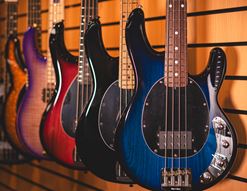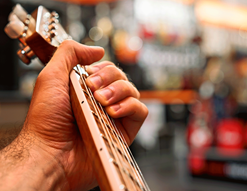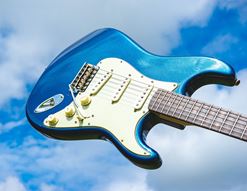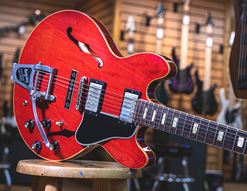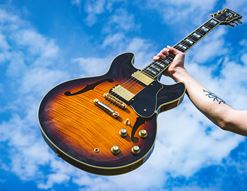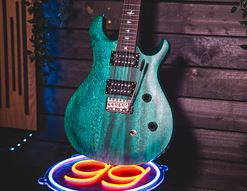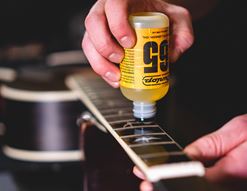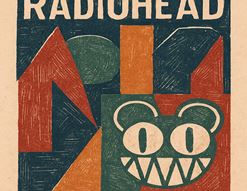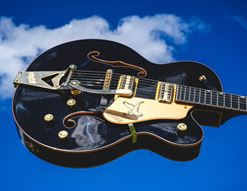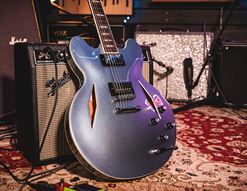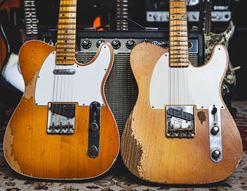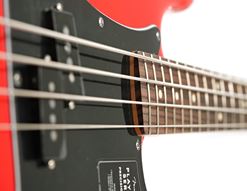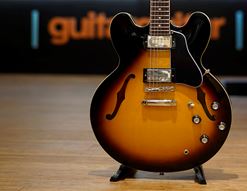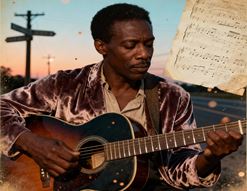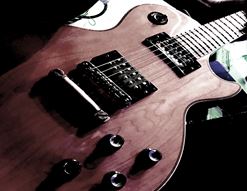Do you ever wonder which guitars we play? The staff at guitarguitar, I mean? We spend all day talking about guitars, selling them, living & breathing them, so when it comes down to it, which ones do we ourselves choose to pay for, take home and play?
Today’s blog is the answer to that question. I’ve asked a bunch of my friends here at guitarguitar to bring in their own pride and joy axes, to get them photographed and to tell me all about them. I wanted to know the stories behind the guitars, directly from the owners.

We have custom built one-offs, special editions and heavily battered, much loved instruments here for you to check out. The only thing in common here is that our team members love them. The text is from recorded interviews with each staff member, with interjections by myself in italics.
Here, in their own words, are our staff stories…
Lisa Ferri - Gibson SG Standard

“This is my 2006 SG Standard in Heritage Cherry. I was turning 21 and my parents wanted to get me an electric guitar that would be a decent one, because I was playing a lot of gigs at that point. My dad took me into guitarguitar and said ‘pick any one you want!’, and so I picked this. My parents didn’t realise the price at the time, they’re not musicians so they had no idea about the prices of guitars! I got a decent price on it though, and ever since I’ve had it, I’ve played it all the time. That’s 18 years and I’ve played hundreds of gigs with it, recorded with it, done sessions with it.”
Okay, so why that one?
“Because it had that classic rock look, and it’s light, so it doesn't feel as heavy as other guitars. I remember when I was younger, I’d see players like Tony Iommi and I thought that was the guitar to make that heavy sound.

It’s just one of those guitars that’s so reliable, I can pick it up and take it to any situation. I’ve been through a lot with this and it feels like my guitar. The strange thing about my SG is that when I was younger I wanted a heavy sound, but what I’ve noticed with the SG is that I can get loads of different sounds: I can get gorgeous cleans with it when it’s paired up with a Fender amp.”
“So, John 5 is your favourite guitarist, isn’t he?
“ He’s my favourite ever. I love how he blends heavy metal and brings in other stuff like bluegrass and country. That’s always inspiring to me, because with my music, I want to make the music that I enjoy listening to but also mix it up a bit: give a new slant to something that’s already popular.
So why not a Telecaster, if you’re a John 5 fan?
“I do like Teles, and it probably would've been my second choice but I tried a Tele when I went to try the SG, and I thought it felt great, but as soon as I held the SG, I was like ‘this is for me!’ The other thing with an SG - and I don’t know if it’s because of the shape or not - but I’m quite a shy person, and when I have the SG on, I just change! (laughs) I feel very confident with it, like a superhero. Literally after every gig, stepping on that stage, I feel so confident with it, and after the gig I give the guitar a little kiss when it goes in its case”.
See and hear Lisa’s SG below in the official video for her band’s latest song!
Tomás Iversen - Carvin Custom and PRS Singlecut
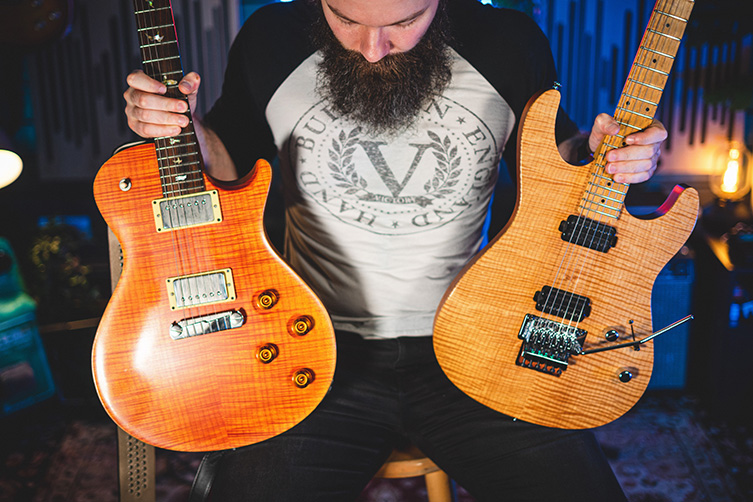
“So, Carvin was - and still is - a USA custom brand. You can spec your own stuff based on whatever models they’ve got. I got this in 2007 and I’d never played a Floyd Rose guitar in my life before: I’d seen them, most of my favourite players had them, so I really wanted one. I loved all the weird noises you could get out of it.
My favourite player then was Reb Beach. He had a Suhr with a Floyd Rose and a natural Koa kind of look, very basic. I thought that was really cool but I couldn’t afford that, but I saw Carvin and always liked the look of them.
I looked them up and there was only one dealer in Europe, in Germany. With Carvin, I still had the chance to spec my own guitar up for not very much money. So, I spec’d it all up online, I filled out the sheet and sent it to Germany, then Carvin built the guitar in the US and sent it across. It has an original Floyd Rose, Sperzel locking tuners and a nice flamed top on an alder body.”
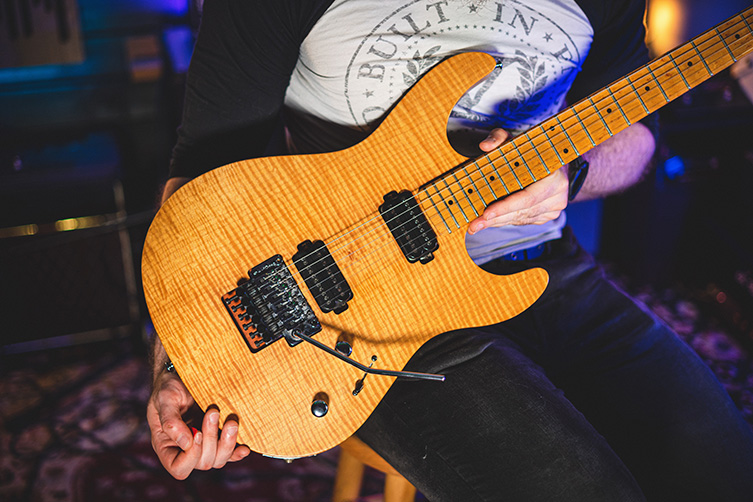
When you got it, how did it match your expectations?
“It blew me away when I got it. I’ve had more experience now with different brands and stuff, but back then it was like nothing I’d ever tried before. It was real top-tier stuff, but I didn’t really understand what that meant until nowadays. Now I’m playing it and still thinking ‘this blows other stuff out of the water’. The way it feels and the way it sounds: I’ve never played anything quite like it. There’s no locking nut, either.”
Oh, did you know that you wanted it that way?
“Well, I did my own nerdy research on it, from stuff that John Suhr had said, basically. He said you don’t need a locking nut with a floating trem if the headstock angle’s right and you have a good set of locking tuners. I don’t know if he still feels that way, but when you look at Suhrs, he’ll put a Gotoh 510 on it, fully recessed, and no locking nut. Music Man do it too, as do PRS on their Tremonti models, so I thought ‘I’ll do it’. I’ve had absolutely no problems. I’ve used it on every recording I’ve ever done, every band I’ve ever been in, and never had any tuning problems from diving, pulling, whatever. I’ve had it for 17 years and it’s my number one or number two guitar, depending on whether I want a Floyd Rose or not.
PRS Singlecut
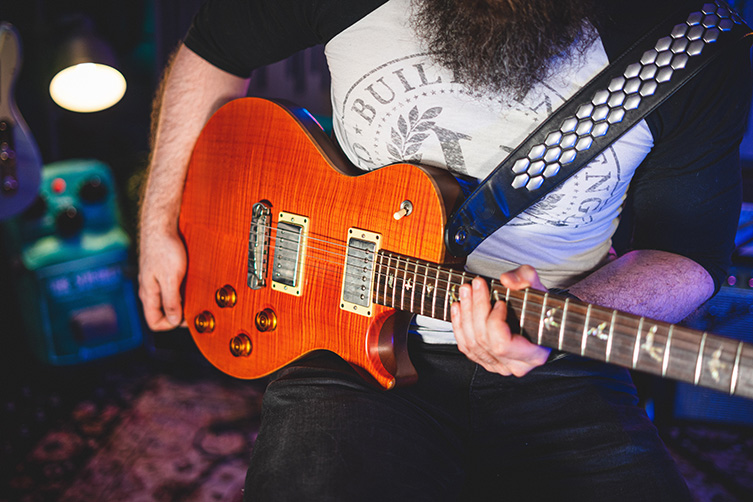
“This was bought the minute my student loan came in (laughs). I always wanted a PRS. Reb Beach was my favourite Floyd-ey player, but I loved the look of the fancy flame top PRS’s because at that time I was into Tremonti. I was also into Les Paul players but I wasn’t that interested in a Les Paul. I saw this bright Orange PRS, which had a Santana vibe about it, but because it was a Singlecut, it had that Tremonti, Les Paul thing. It’s a Singlecut satin, which they only made for 6 months.”
This was pre-lawsuit?
“This was just after they won the lawsuit, and before the 245’s and the 250’s.”
Yeah, they don’t actually talk about Singlecuts anymore, do they?
“No. So, they’d just been allowed to build them again and these were made for a short period: they are exactly the same as the gloss ones but they have nitro satin instead. The two things that drew me to it were the colour - the bright orange - and I liked the feel of the satin.”
Did you know it was going to be limited at the time?
“Not at all, I just bought it because I liked it. The flame top is incredible, it plays really well. It’s a Wide Fat neck: I love the chunky neck, and upper fret access - for a singlecut - is great. I actually saw this guitar advertised in Total Guitar magazine, and it only came in four colours. You very rarely see them come up second hand, and if you do, it’s usually in a green colour. So between that and the Carvin, those are the two guitars that I would take anywhere. They just fit two niches that overlap.”
Keiran Hird - Fender Standard Telecaster
“This is a Fender Standard Telecaster from 2004. I bought this around about the time I was transitioning from exclusively playing metal guitars. At that point, I only had Floyd Rose, spiky looking guitars. I discovered Biffy Clyro, which translated me more to the Fender world, but I didn’t like Strats. I saw a video of Simon Neill playing a Telecaster and went ‘Hey, that thing looks pretty cool!’ I went and played one, and walked away with it pretty quickly. This was back when you had to pay that extra £30 for the Three Tone Sunburst!
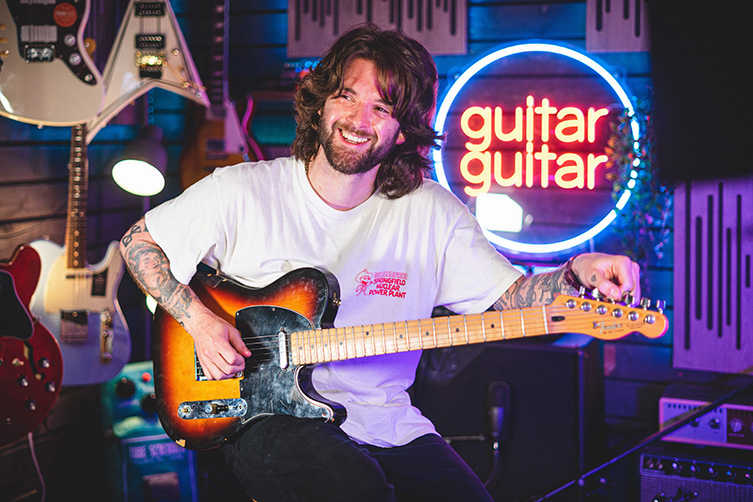
It was a big transition period for me, and the main thing that I realised was that you can do a lot more with single coils that I wanted to do, rather than just full output humbuckers.”
What age were you?
“I was fourteen”.
Right, and at that point, you’d already been playing guitars with Floyds on them. You were as metal as it got!
“Yeah, I was as metal as it got. Everything was in drop-C, and then I picked up this Tele and went ‘Oh, I can actually do more on this!’”
That was your main guitar for a certain period of time?
“For probably the most active part of my gigging. I got that guitar, and when I moved away from home at 17, it came with me. I then proceeded to play it for my band’s whole bunch of EPs and first album, and I toured with it up and down the UK. It only got retired around 2014 and that was because of overuse, I would say (laughs)!
I moved onto another Telecaster - a 72 Custom - that I had for a wee bit of time. It was always predominantly Fender stuff, and then I moved to an Ernie Ball Music Man, a Sterling model, but that was because it still had a bit of that Fender DNA in it.
I actually pulled the Tele back out for our last band recording, which was in 2018, just for using in the studio. That was a tamer situation to use it in, I wasn’t going crazy and out of tune playing it live! It’s got quite a few battle scars, including one we were talking about earlier…
We were filming a music video on a big, stoney concrete empty bit of land right in the middle of Glasgow city centre, in the financial district (laughs) where we had a bunch of buses going past and even the police turning up at one point! We were worried that they were gonna shut us down but they just wanted to see what we were doing!
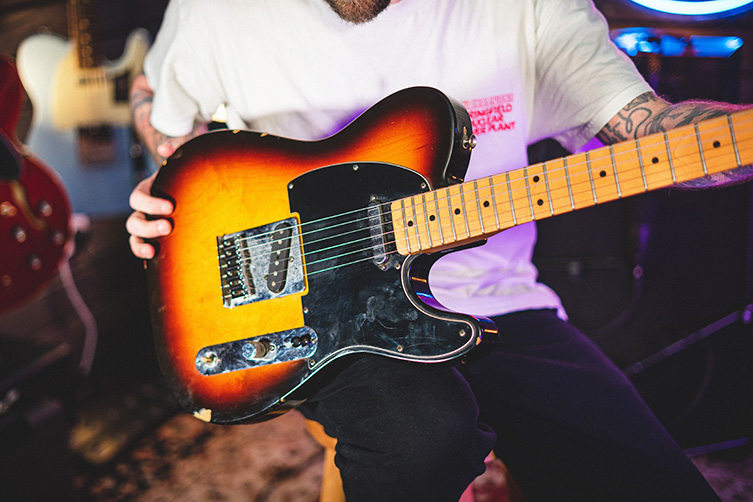
We were doing our first take, and I was feeling a bit too much like a rock star, so towards the end of it I decided to take my guitar off and throw it full-force onto the ground to make it look cool…only to find out that the guy wasn’t even filming when I threw it! I ended up taking a huge chunk out of the body.
Another bit of damage that is quite funny is, I was touring with it and we were playing in Sleazy’s (Glasgow venue Nice ‘n’ Sleazy). It came across me for whatever reason to do another ‘cool guitar move’: I lifted it up to kinda push it up towards the sky a bit, and managed to knock one of the tuning pegs off the air conditioning unit and completely snap it off mid-gig. I had to use the spare guitar for the rest of that tour.”
Have a look below at the very video Keiran mentioned!
Martin Robbie - BC Rich Gunslinger

“When I was younger, my first proper guitar was a BC Rich Warlock that I got second hand: 80s Platinum Series, pink. It was everything I wanted. Maybe about 5 or 6 years ago I started thinking, ‘It might be nice to have that guitar back’: there was a bit of nostalgia there with BC Rich cropping back up in pop culture with Stranger Things and whatnot.”
So, you’d lost your pink Warlock?
“Indeed, I’d sold it to a friend of mine and it turns out that that guitar no longer exists. Getting it back was not an option! I still had a hankering for an 80s BC Rich, and the other thing I really wanted was a holoflake finish. Holoflake for me is one of the most exciting and unusual finishes, and it’s so hard to get. Very few brands offer it, and if they do, it’s a premium price.”
Is your love of Holoflake based on any particular cultural thing?
“It’s like the magpie with the shiny thing, there’s just something about the way the colour changes with the flakes that makes it completely unique every time you pick it up. Depending on how the light is shining, and depending on the angle you hold it at, it’s always doing something different. It’s blue, then it’s green, then it’s red. It does it all. I like that decadence, that overblown appearance. It’s what I loved about my pink Warlock as well, it was rebelling against the typical metal stereotype. This, partnered with my interest in 80s AOR-type music, makes the Gunslinger the perfect fit.”
Is it kind of like a spiritual sister to your pink Warlock?
“I feel like maybe it was its mother or something (laughs)! It feels like it has a bit more worth, value - not monetary - just in terms of its playability and what’s gone into it. This might be American, but more than likely it’s Japanese. It doesn’t say ‘Made in USA’ on the headstock, as most of the 80s ones will. The holoflake finish is, I believe, a refinish. However, there’s every possibility it might not be, because in that late 80s era, loads of stuff started happening in terms of custom orders, one-offs, and there’s a lot of stuff out there that isn’t documented. The neck plates were made, put into a big box, and pulled out at random. So the guitar that’s one number higher than this, isn’t necessarily the next one made. You can’t trace the origin year that way.
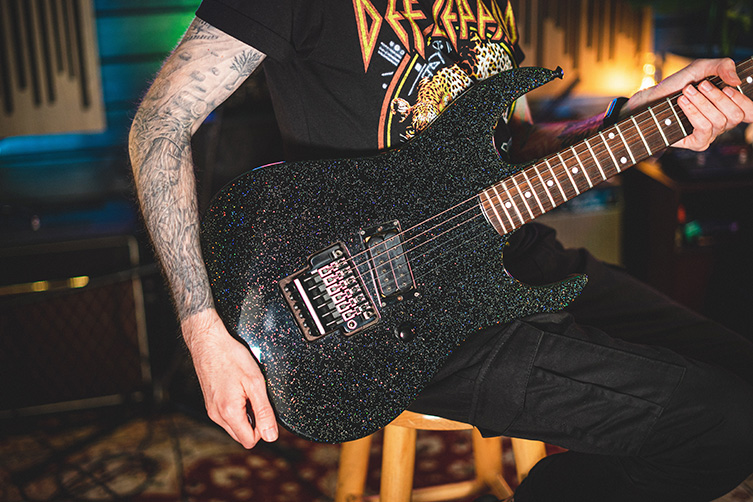
I did speak to some BC Rich enthusiasts and some of them did think it was an 80s USA model. The tuners are original Grovers, the shape of the cavity plate on the back, the DiMarzio pickup and the Gotoh/Ibanez-style tremolo point towards it being a USA guitar. I’ve also read that some USA-made BC Riches didn’t say ‘USA’ on the headstock because the parts were made in Japan, which were then shipped to America and assembled there. It was such a changing period of time for BC Rich in terms of ownership that it’s impossible to tell. I kind of like the mystery!
Ryan Bell - Epiphone Wilshire
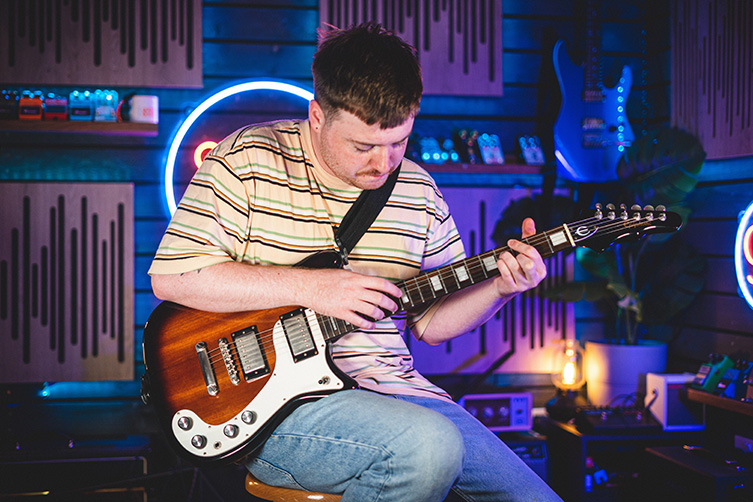
“This was actually my first staff purchase at guitarguitar. I remember gasping out loud when I first saw it on our website. The main thing I love about it is the weight. It’s got two humbuckers which is great because I love the chunkier Les Paul-type sound, but the weight of a Les Paul is one of the factors I’m not into. As well as that, it’s got coil taps which is great because I switch between a lot of clean and heavy stuff when I play. It was a bit weird getting used to the thicker neck but I’m really into it now.”
What were you mainly playing prior to getting this one?
“I was playing a Telecaster before this, I was a Tele player through and through. The thicker neck of the Wilshire helped with tapping, because I play a lot of math rock and midwest emo stuff. When it came to the Telecaster, essentially the two single coil pickups were too thin for what I was into. Going from a Telecaster to a Wilshire was a nice progression: I was able to have the nice cleans, and then chuck down the coil taps and just go for it.”
This isn’t your first Wilshire, though, is it? What is it about the Wilshire that attracts you to it?
“How they look, 100%. I must have been about 10 or 11 and I was into My Chemical Romance. Frank Iero released an Epiphone Wilshire Phantomatic in Antique Ivory, I think it was? I always thought that was just a really cool guitar. I never got one at the time because they were out of my price range as an 11 year old (laughs), but that was my first introduction to Wilshires.
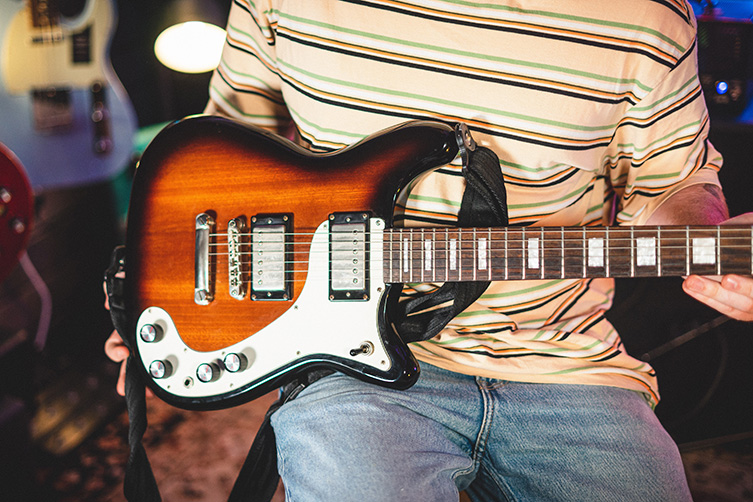
I’ve had a Les Paul before and it always gave me a bit of shoulder pain, and I think it was the same reason Frank Iero used to play a Wilshire. I’ve noticed over the last three years that playing gigs with a lighter guitar has been all the difference for me. It’s definitely mainly the looks of it, but over time, the weight and the tone are things I’ve learned to love.
They look cool, they’re hard to come by, and also the batwing headstock is a favourite of mine! It’s also something from the legacy of the original pre-Gibson Epiphone, it’s that kinda thing where other Epiphones like the Coronet aren't 100% my thing but the WIlshire: the shape, the weight…I’m all about it.
Check out Ryan's band below!
Ray McClelland - Gibson Les Paul Guitar of the Week #46
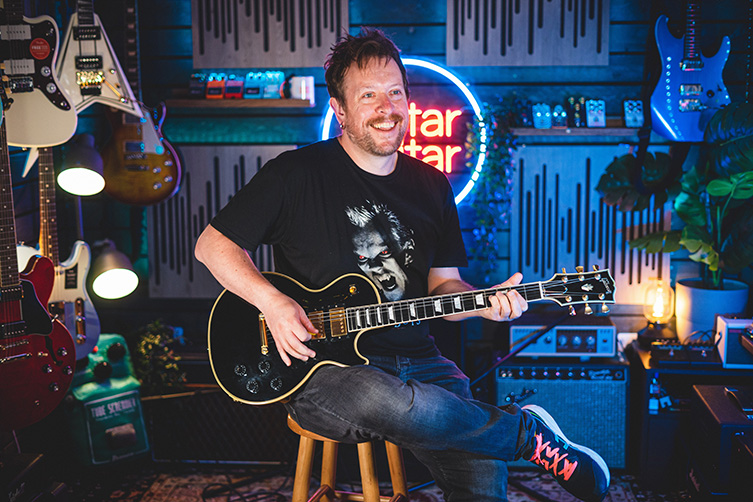
“I’ve owned this guitar since I saw it hanging up in guitarguitar in 2008. I had been working there for less than a year and had already snagged myself a PRS CE22, but I took one look at this and knew I had to have it. The PRS got swiftly traded in, which is something I do regret (it was exceptional), but the very fact that I still own this guitar speaks for itself, I suppose!
Back in 2007/8, Gibson had this huge campaign called ‘Guitar of the Week’, and every week for over a year, they’d build these unusual instruments in limited numbers. There was the ‘Reverse Flying V’, which is exactly what it sounds like; there was an SG Special in satin white with a varitone switch and there was this one in week 46: a Les Paul Custom Classic Black Beauty. They made 400 of them, and mine is number 333.
So what is this? It’s a Nashville-built Les Paul, so not a Custom Shop (not, then, a ‘true’ Custom) since those were made in Memphis back then. It’s a mix between a Les Paul Classic (60s neck profile, trapezoid inlays, no binding on the back edge of the body) and a Les Paul Custom (binding everywhere else, a larger headstock, ebony fingerboard) with some details that you don’t normally see on a Les Paul, such as the tulip headstock inlay. Practically every other Gibson has this, so the LP may as well have a shot, too.
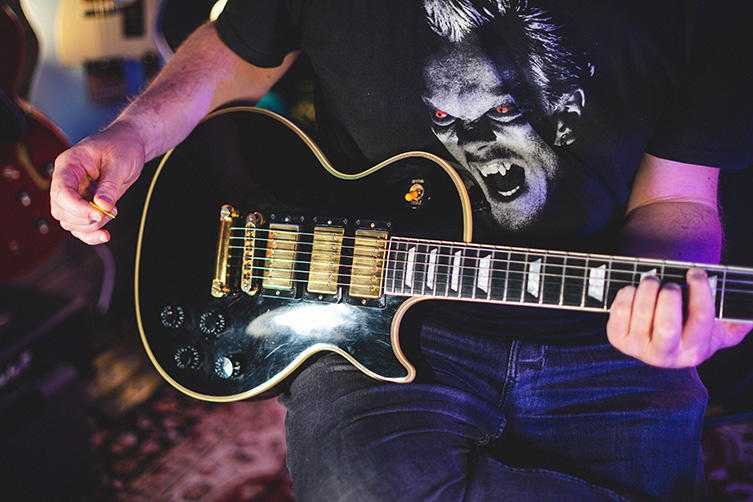
It has three 57 Classic humbuckers, though I’ve long since disconnected the middle one. Why? It looks super cool but is otherwise pretty unnecessary in my opinion! Other mods include changing the original controls (three volumes and a master tone) to a master volume, master tone, a Reverend-style bass contour and one remaining knob that currently does nothing at all.
The headstock has been broken off and stuck back on (cheers Billy Finlayson for all of the work done on this!), the gold has worn off and my late, much beloved cat pal Roger Moore left some choice claw scratch marks on the body, which only makes me cherish this guitar all the more!
I’ve played about eight thousand Les Pauls since starting at guitarguitar, and I do feel that there’s something a bit special about this one. It does have chambering in the body, even though the spec sheet says otherwise. Were Gibson doing some experimenting with these Guitars of the Week? I don’t really know, but it’s one hell of a guitar and I always feel lucky to own it, particularly given how expensive similar guitars are these days.
Les Pauls don't do everything I need (I've still to find a guitar that does, to be honest), but what it does do, it does particularly well. I always feel pretty awesome when I throw it on and bash out a big, fat, distorted riff: it's a mighty Viking of a guitar and is an excellent on-stage companion for sure.
On the track below, you won’t see the Les Paul but you’ll hear it! The main guitar tracks are a Mexican Strat, but the Les Paul is the one howling in the background with an E-Bow and a slide!”
Anna Gembal-McLaughlin - PRS CE24

“I am a big fan of PRS guitars. I’ve always wanted to have a green PRS and I had my eye on Trampas Green but they were unavailable at the time when I was ready to purchase. A limited edition satin model came out in Jade Green Burst. I fell in love and was very lucky because our PRS rep had a beautiful example at hand. When I saw a photo of it, I went ‘Yes, that’s the one!’”
So, why green?
“I dunno, I love the colour green and think a green guitar looks great on stage. And green is a really positive colour, and it adds a little vibrance into my black clothing.”
And why PRS? Why do you love them so much?
“This is a bit of a more in-depth story. I actually discovered PRS thanks to Orianthi. I remember watching behind-the-scenes rehearsals for the Michael Jackson This is It tour, with Orianthi rehearsing. She was this super-empowered, shredding woman and I also saw birds on the fretboard of the guitar, and I just kind of remembered that. I wasn’t quite aware of the brand at that point, but the birds stuck in my head, and the image of a cool girl rocking out at that kind of level of musicianship. It was a dream for me: a goal, if you will. I wanted to be like her.
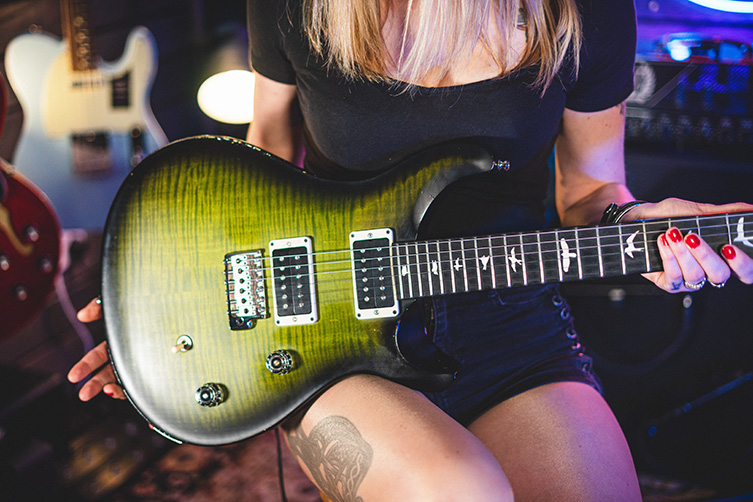
That was my first initial impression of PRS as a brand. Years later, when I started working at guitarguitar, I saw these guitars in the flesh in front of me every single day, it was just absolutely mindblowing. They were everything and more that I could’ve asked for PRS to be: they looked great, sounded great and they feel great when you play them.

My CE24 has been on 90% of shows that I’ve played, as well as in the studio. Recently, it has also played at Download festival!”
How did that guitar end up like that?
“Well, I’m glad you asked! I am well-known for wearing lots of accessories such as studded belts, and I like to wear my leather jacket on stage as well. As this is a satin finish, it very quickly got damaged by wear and tear and just jumping about the stage with the guitar, wearing all of these zips and spiky belts.
When you first noticed that your outfit was damaging your guitar, were you tempted to try to do something about it?
I got really sad (laughs)! I just bought this guitar, it was so perfect and brand new, and these scratches started appearing! I thought ‘I am the worst PRS owner’ because the stereotypical PRS owner keeps them immaculate for years. Here I am, two weeks into owning this guitar, and it’s bashed! But then again, with time I got to acknowledge that and actually I’m very proud of that now because, to me, they are like battle scars. It shows the amount of gigs that I’ve played, and I can’t exactly say I know which scratch was made during what gig, but they nicely blend into one wonderfully relic’d PRS!
And does it make you less precious with it?
Yeah, 100%, but in a good way! I’m also using strap locks on it, and that allows me to be a bit more wild onstage, which is part of our act with my band as well. I think that in a way this allows me to express myself better as an artist, rather than being confined to one place being all precious about it. To me, a guitar is a tool: it should be played; it should be performed on.
Check out Anna's PRS in action below!
Mardi Milne - Epiphone Thunderbird

“I already liked the Thunderbird but this one’s got a Hipshot bridge on it, and active EMG pickups. I like active pickups in a bass, and the bridge is really nice, it’s a high-mass thing. Those things had been added, it was upgraded before I got it. I tried it out and it felt great. It holds its tune well, like, incredibly well!”
That wasn’t your first bass, was it?
“No, I’ve had a few. One that I really liked was a Washburn model, I can’t remember the name of it, but it was almost like a Superstrat-type guy. That was what got me into the active pickups. That one needs a refret and a proper set up; it needs a lot of work! I couldn’t really use it so I was trying to find a bass that was ‘my bass’ that I go to all the time.
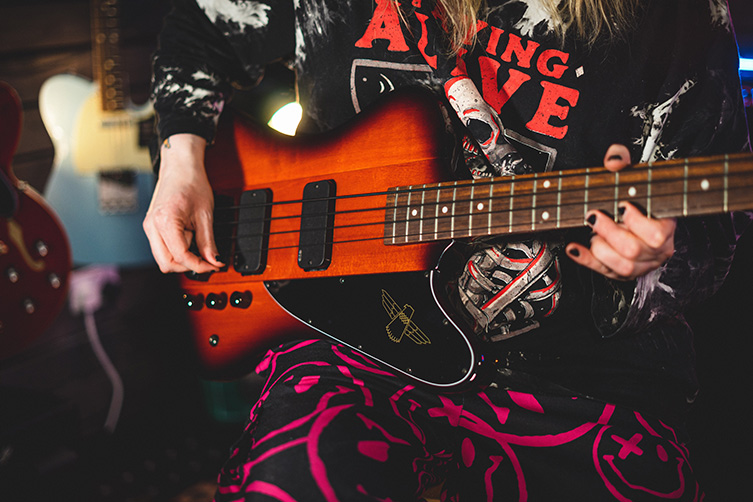
I had a 5 string, but the active circuit is broken now - it only works in passive mode - and I don’t love 5-strings, so I’d been looking for a while for something that was like ‘that’s what I want’ and then I saw this.”
You’re not just a bass player: you do lots of things. That’s a pretty big bass, and a lot of guitarists use short-scale basses in order to minimise the difference in size. That’s not what you’re into?
“No, but I was using a Mustang bass, and I like that but I prefer the 34” scale, it’s a bit meatier. The Thunderbird is quite a comfortable bass, actually, except for the edge where my right arm goes, I wish it had a contour! At this point, I wouldn’t class myself as a guitar player who plays bass, I’m more a bass player who plays guitar. I feel more attracted to the bass than the guitar. The Thunderbird has become my go-to. What I would’ve ended up doing in terms of mods was already there. I prefer the active sound because it’s more pronounced, so it’s almost like it has a compressor on it already, it has a very punchy sound, and quite bright, which I like. I don’t really use a lot of bridge pickup, it’s usually the middle pickup which has a lot of definition to it. Maybe it’s a sound you could get by running it through pedals, but with this, you don’t have to. It’s almost like you could plug it straight in and get a good sound.”
Arran Dawson - Balaguer Custom

This guitar was inspired by a Manson guitar I have that featured a built-in Sustainiac, but the guitar's short scale length posed challenges with drop tunings. The idea of modifying the Manson with an Evertune bridge seemed risky and expensive, potentially damaging the guitar. This led me to explore the option of commissioning a custom guitar, which introduced me to Balaguer guitars. I engaged in numerous discussions with Joe Balaguer, and we agreed on a Tele-inspired design with a few cool features.
It’s a custom Balaguer Baritone Woodman designed by Joe Balaguer and myself. It has Bare Knuckle Raw Black Hawk pickups, a Sustainiac system and a flame maple veneer with hues inspired by my eye colour and the artwork from Karnivool’s “Sound Awake” album. It’s Ideal for recording sessions, as I'm tired of the constant need for tuning.
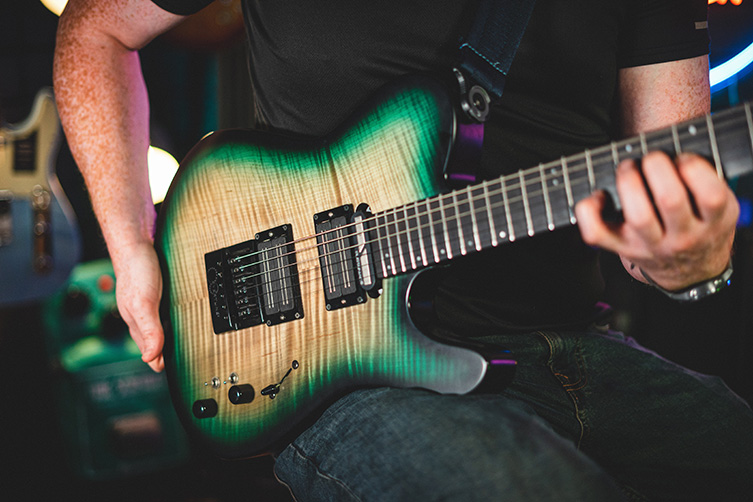
This is What We Play
So, there’s a snapshot of the people behind the scenes here at guitarguitar, and the guitars they love playing. Whether the guitars have been toured, launched directly into concrete, or lovingly kept safe at home, they have all played an important part in shaping us as players, not to mention guitar lovers.
Were any of the choices surprising? It’s hard for me to tell from this side of things, partly since I know all of these people! I’d say that their guitar choices - and more significantly perhaps, their stories - tell a lot about their personalities.
I hope you’ve enjoyed meeting us in this way. Would you like to see more? Do let me know and if enough people click through, read the articles and like them etc, then I can bring you a volume 2 in the future. Until then, thanks for checking out our Staff Stories!

